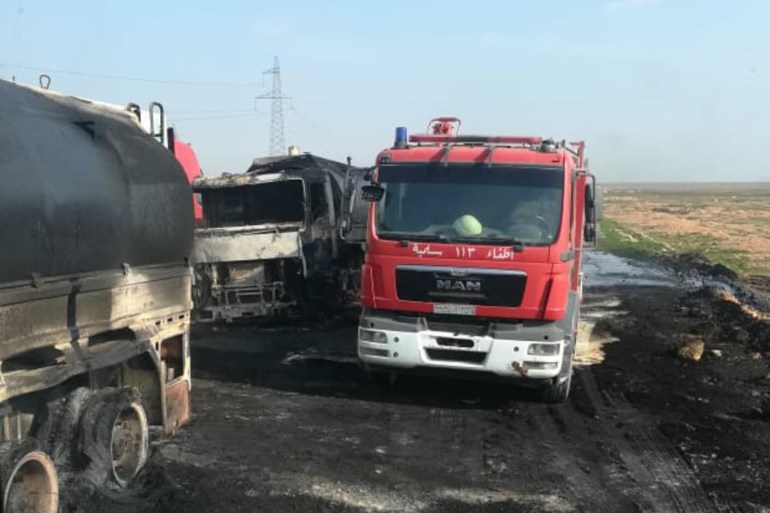A series of successive attacks in the Syrian Badia raised questions and raised questions about their importance and the extent of their impact.
As the talk here concerns the Islamic State, which has resumed its activities in eastern Syria through attacks carried out against the regime forces and the Iranian militias loyal to them.
The attacks came after a relatively large stagnation of the organization’s activities since the killing of its leader Abu Bakr al-Baghdadi in October 2019. Is the organization trying to rise again, or is it the "dance of the sacrifice"?
New appearance
Since its great loss in Syria and Iraq, ISIS has not stopped its attacks in the Syrian desert, but at the same time it has been described as modest compared to what it was carrying out previously.
However, the past few weeks revealed a surprise that ISIS set off through two specific attacks, based on the numbers and location of the victims.
The first left more than 30 people dead for the Syrian regime and the militias loyal to it, while transporting them by bus from Deir Ezzor to Palmyra in the eastern countryside of Homs.
The second operation was distinguished by its timing and location.
It came less than 48 hours after the first attack, specifically near the city of Salamiyah in the countryside of Hama, which indicated that the organization's activity appeared to be greater than it had been after the decline at the hands of the international coalition.
In this regard, journalist Bashir Al-Abad confirmed - in his interview with Al-Jazeera Net - that ISIS is most likely responsible for the recent attacks, with the aim of confirming that it still exists, indicating that the organization carries some strength and worries the Syrian regime, but it is not in the way it was. It previously.
For his part, the military analyst, the dissident Colonel Khaled Al-Mutlaq, considered - in a statement to Al-Jazeera Net - that the organization has reproduced itself in the Badia with a new strategy based on guerrilla warfare.
The funeral of the dead of the regime forces after the ISIS attack on a bus on the Deir Ezzor road (Syrian Press)
Stretching
The past experience of ISIS makes the most important question of whether or not it can expand again?
And this is in light of the Syrian Ministry of Defense talking about the organization’s movements in the Badia and the operations to confront it.
But al-Aqeed al-Mutlaq ruled out the organization’s ability to expand again, "because its foundation is based on what he described as guerrilla warfare and not as an organized army." Deir ez-Zor, all of which are in the areas of the Syrian regime, while the organization's activity in the areas known as the Syrian Democratic Forces is much less.
Al-Abbad attributes this to the organization's establishment of its sites before its retreat in the desert away from the control of what is known as the Syrian Democratic Forces, stressing that the organization's operations in areas known as the Syrian Democratic Forces are based on cells that carry out assassination or bombing operations as needed and important to him.
Here, military analyst Khaled al-Mutlaq points out that the organization's activity in areas known as the Syrian Democratic Forces is more difficult due to the presence of several factors, including modern tracking devices owned by these forces, and agreements that it secretly concludes with the organization in order not to target their areas.
Effects of oil tanks being attacked by ISIS in the countryside of Salamiyah, central Syria (communication sites)
Various attacks
The nature of the attacks helps determine the perpetrator in the event that it does not declare itself, and this is what happened in multiple attacks that the organization does not announce its adoption, so the journalist Al-Abbad confirmed that there are some types of attacks that the organization has nothing to do with. For a variety of reasons, including disputes over spoils or thefts.
Syrian opposition media quoted a statement that the organization had published, in which it revealed the operations it carried out during 2020, amounting to about 600 in various parts of Syria, including about 500 in the eastern region of the country.
Despite the exaggeration in these numbers, the last two operations proved that an unusual and disturbing activity for the regime is taking place in the Syrian desert by the organization.

